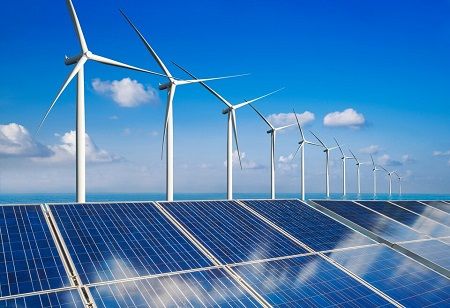
- Northern and Southern hubs to anchor Vietnam’s clean energy growth.
- Massive solar, wind, and LNG capacity targets set for 2030-2035.
- Nuclear power, battery storage, and biomass to diversify energy mix.
As per the ministry's recently released Decision 1509/QĐ-BCT regarding the execution of the Adjusted Power Development Plan VIII (PDP VIII), the northern center will be situated in regions like Hai Phong, Quang Ninh, and Thai Binh, with possibilities for future expansion into surrounding areas.
This center will feature production plants for wind and solar energy devices, logistical services, and dedicated seaports to aid in the development, functioning, and upkeep of renewable energy initiatives.
It will also include eco-friendly industrial parks with reduced carbon emissions and training as well as research centers for highly skilled talent in the clean energy industry.
The southern center is anticipated to be established in regions such as Ninh Thuan, Binh Thuan, Ba Ria-Vung Tau, and Ho Chi Minh City, which possess considerable potential for wind and solar power as well as port facilities.
The development strategy will reflect that of the northern hub, focusing on creating a comprehensive value chain for the renewable energy industry in the southern area.
Also Read: Building a Greener Tomorrow: Renewable Energy Integration in Modern Architecture
As per the plan, by 2030, the installed capacity will comprise 22,524 MW of LNG-fired generation; 14,930 MW of domestic gas-fired generation; 31,055 MW of coal-fired generation; 33,294 - 34,667 MW of hydropower; 46,459 - 73,416 MW of solar generation, and 26,066 - 38,029 MW of onshore wind generation.
Offshore wind energy to meet local consumption aims to hit 6,000 MW by 2030 and expand to 17,032 MW by 2035.
Ninh Thuan 1 and 2, two nuclear power plants with an intended capacity of 2,000-3,200 MW each, are anticipated to commence operations between 2030 and 2035.
Additional renewable sources like biomass, waste-to-energy, and industrial residual heat will likewise be promoted, aiming for a total capacity of 1,523-2,699 MW of biomass power and 1,441-2,137 MW of waste-to-energy.
By 2030, it is anticipated that battery storage systems will achieve a total capacity of around 10,000-16,300 MW. The advancement of concentrated solar power will necessitate the integration of battery storage, with at least 10% of the plant's capacity being stored for two hours.

